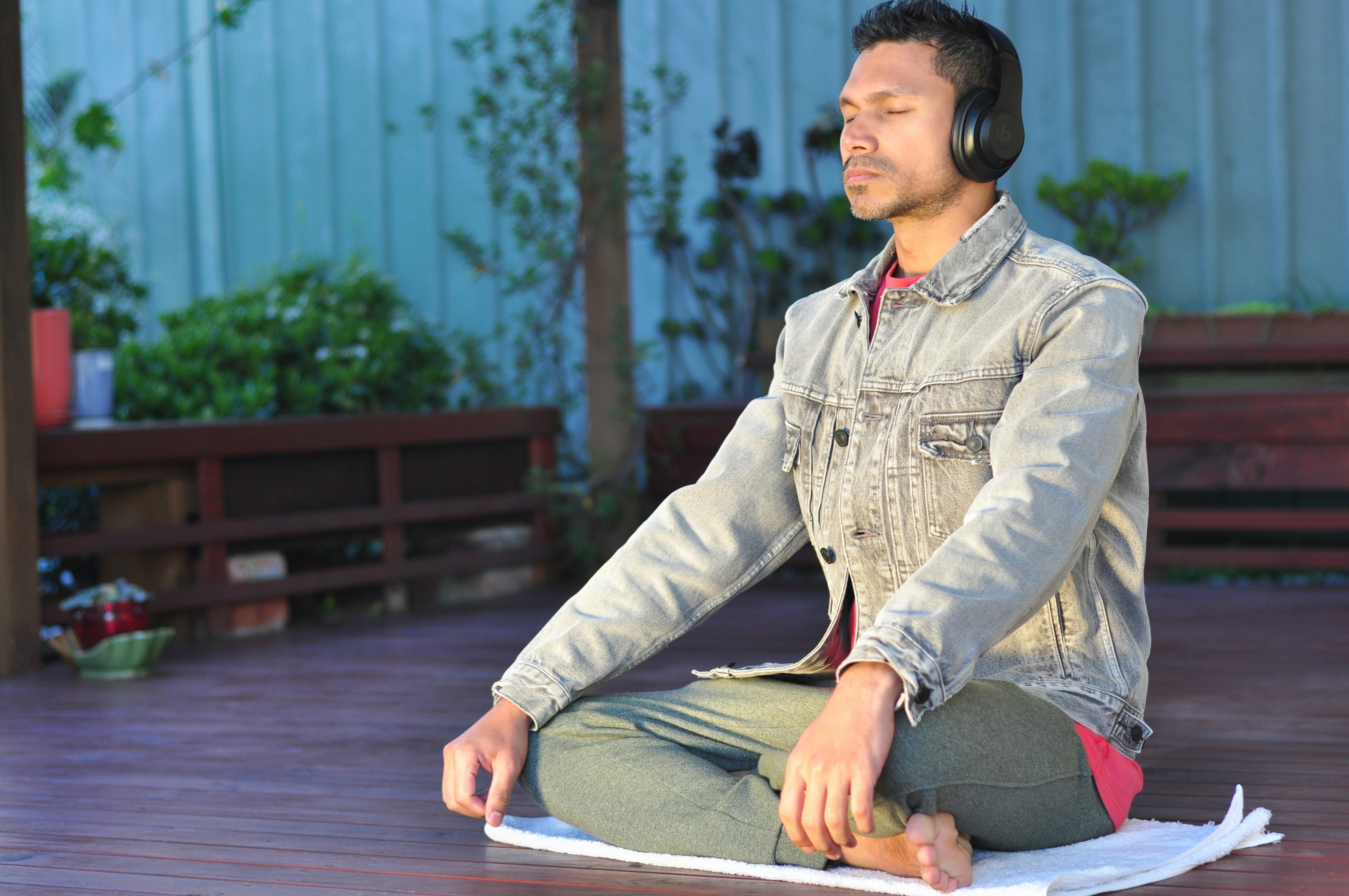The Symphony of Stillness: Unlock Meditation's Healing Frequencies
In a world that constantly demands our attention, the search for inner peace has never been more critical. "The Symphony of Stillness" embodies a transformative journey, shedding light on the profound healing power of sound frequencies within yoga, meditation, and spiritual wellness. By weaving sound into your practice, you find an anchor in the midst of chaos. This article explores the sacred intersection of sound, mindfulness, and movement, inviting you to embrace a holistic approach that can fundamentally enhance your journey toward well-being.
The Transformative Nature of Sound in Meditation
Sound, at its core, is a fundamental part of the human experience. From the soothing whispers of nature to the rhythmic beats of our heart, sound shapes our emotional landscape. In meditation and movement practices, sound frequencies play an essential role in setting an ambiance that fosters healing and connection. Research conducted by Harvard’s Department of Psychology emphasizes that sound can significantly affect mood and mindfulness, contributing to emotional healing processes.
Understanding Sound Frequencies and Their Impact
Sound frequencies vibrate at different rates and can evoke various responses within our minds and bodies. For instance, 432 Hz is considered a natural tuning that resonates with the universe, promoting relaxation and harmony. In contrast, 528 Hz is associated with transformation and miracles, often dubbed the “love frequency.” Incorporating these specific sound frequencies into your meditation practices can deepen your state of relaxation and spiritual awareness.
A beautifully crafted sound meditation, as discussed in our post on the soundscape of serenity, can elevate your experience significantly. Imagine the gentle rustle of leaves or the lapping of waves as you meditate. These natural sound frequencies can coalesce, creating an immersive environment that enhances your inner journey.
The Role of Sound in Yoga Practices
Incorporating sound frequencies into physical movements like yoga elevates the experience to a new level. As you transition through postures, specific sounds can guide your breath and intentions. Think of Tibetan singing bowls or native flutes—each instrument creates a resonance that directly influences your body’s energy. This harmonization between sound and movement leads to a more profound, transformative practice.
As you engage in yoga, becoming aware of the sounds can deepen mindfulness. Aligning your movements with the subtle nuances of sound opens a pathway for spiritual awakening. Whether you're practicing gentle Hatha yoga or vigorous Ashtanga, there’s a rhythm at play that can support your alignment with higher states of consciousness.
Exploring Sound Meditation Techniques
Now that we understand the importance of sound in meditation and yoga, let’s delve into practical sound meditation techniques you can incorporate into your routine.
1. Tuning Fork Meditation
Using tuning forks, you can create specific frequencies that resonate with your surrounding environment and internal energy. Begin by selecting a tuning fork that corresponds with an intention. For instance, fork at 528 Hz promotes transformation. Lightly strike the fork and place it near the body. Allow the vibrations to penetrate your energy field, creating a sense of balance and tranquility.
2. Chanting and Mantras
Engaging in chant or repeating mantras during meditation can be incredibly powerful. The vibration of your voice, combined with repeated sounds, can not only focus your mind but also elevate your spirit. For example, chanting “Om” synchronizes bodily energies, promoting a state of deep peace and oneness with the universe.
3. Sound Bath Experiences
Sound baths involve lying down while various instruments—such as crystal bowls, drums, and chimes—create a nuanced sound environment. The healing frequencies wash over participants, inducing a deep state of relaxation and meditation. Engaging regularly in sound baths can ground your practice and enhance emotional healing.
For those in urban settings, exploring techniques such as urban energetics can be beneficial. By pairing these sound techniques with nature-based rituals, you can deepen your connection to both urban and natural elements in your spiritual journey.
4. Breath and Sound Connection
Integrating breath with sound frequencies creates an enriching experience. Breathing in deeply while allowing a specific sound frequency to resonate can amplify emotional releases. For instance, using sound-based pranayama techniques, like those discussed in our article on pranayama, can bring profound clarity and emotional healing.
How Sound Frequencies Influence Mental and Emotional States
Research increasingly underscores sound's ability to change our mental and emotional states. A study published in the Journal of Alternative and Complementary Medicine revealed that participants who regularly engaged in sound therapy experienced significant reductions in anxiety levels and improved moods.
Emotional Healing Through Frequencies
The interplay between sound and emotion is particularly significant in meditation and movement practices. An experience involving sound frequencies activates specific brain pathways associated with relaxation and stress relief, promoting emotional balance. Harnessing frequencies such as binaural beats or isochronic tones can aid in this balance, allowing individuals to experience enhanced states of relaxation and focus.
Connecting with Inner Wisdom
Adopting sound frequencies in your practice can also facilitate connections to your inner wisdom. When meditative soundscapes accompany a thoughtful intention, barriers dissolve, and insights begin to arise. Intentional sound waves guide the journey inward, allowing you to discover profound truths hidden within.
For instance, exploring themes such as gaining insights from the collective unconscious through practices like ancestral spiritual practices can open new pathways of understanding. When you align with the vibrations of your ancestral lineage through sound, you may access profound insights that contribute meaningfully to your contemporary life.
Creating a Personal Sound Meditation Space
Crafting a personal sound meditation space can greatly enhance your practice. Here’s how to build an environment conducive to sound healing:
1. Natural Environment
Find a quiet space in nature, whether a local park or your backyard. Surround yourself with the sounds of nature, using the elements as instruments for your meditation. By tuning into sounds—like bird calls and wind—the natural melody can guide your meditative journey.
2. Sound Instruments
Incorporate sound healing instruments like singing bowls, drums, or chimes. Experiment with different sound-makers to uncover which ones resonate most deeply with your practice. Creating a dedicated space with your chosen instruments can invite exploration and creativity.
3. Mindful Arrangements
Arrange your meditation space mindfully, ensuring it feels inviting and serene. You may wish to light candles or burn essential oils that complement the present sounds. Such elements can amplify sensory experiences, deepening the integration of sound into your practice.
Seizing the Opportunity of Sacred Sound for Spiritual Growth
As you embark on this journey of sound frequencies in meditation and movement, embrace the opportunity for profound growth. The spiritual wellness community continuously evolves, incorporating dynamic elements that expand consciousness. By harnessing the symbiotic relationship between sound and intention, you solidify your path toward holistic well-being.
Intentional Listening
Practicing intentional listening can elevate your experience. Instead of merely hearing sounds, immerse yourself in a listening meditation where every sound becomes meaningful. Shift your focus between external tones and your internal dialogue. This technique fosters a deeper connection between the self and the universe, revealing insights previously buried beneath the surface.
Practicing Gratitude Through Sound
Cultivating gratitude, especially for the sounds that surround you, can transform your meditation routine. Each sound acts as an acknowledgment of the present moment, promoting emotional wellness. As you listen to the gentle hum of the world around you, isolate specific sounds that resonate with you. Transform these into a gratitude practice, weaving them into your reflections.
Final Thoughts: Embrace the Symphony Within
In integrating sound frequencies into your meditation and spiritual practices, you are not just encountering healing; you are embarking on a personal symphony that resonates with the universe. Every sound shapes our journey toward balance, offering profound insights along the way. As you become increasingly attuned to these frequencies, you cultivate deeper, more meaningful connections with yourself and your inner world.
Engage with sound in your daily life by incorporating the techniques discussed here. Let your practice resonate with the melodies of your heart and mind. Ultimately, the symphony of stillness invites you to explore your inner landscape, finding solace and healing through sound, every day.
By nurturing your sound journey—whether through experimenting with new techniques or finding inspiration in nature—you unlock a powerful tool for spiritual growth and emotional balance. Explore the possibilities, and embark on your unique path toward wholeness and connection.





















